|
Home
Alphabetical list of all titles
The Tschiffely Collection
The Hanbury-Tenison Collection
The Cunninghame Graham Collection
Wanderreiter Klassiker
The Isabella Bird Collection
General
Africa
Asia
Australia and the Pacific
Europe
The Indian Subcontinent
Latin America
North Africa and the
Middle East
North America
The
Orient
Antarctica
Horse Packing and Travel
Our Publishing Mission
Equestrian Travel books by other
publishers

Visit The Long Riders' Guild - the world's first international
association of equestrian explorers!

Visit The Long Riders' Guild
Academic Foundation - "Science, not Superstition."

Visit Classic Travel Books for more exciting travel tales!
Website designed by Basha
O'Reilly
| |
Great Britain
|

ISBN 159048133X
|
Beggars on Horseback, Martin Ross and
E. Somerville, with a Foreword by Jean Cunninghame Graham
- Incredibly famous
in their day, the aristocratic authors of Beggars on Horseback penned
a total of fourteen books, including their immortal classic, “Some
Experiences of an Irish R. M.” But few realised that “Martin Ross” and “E.
Œ. Somerville” were actually the pen names of Violet Martin and Edith
Somerville, two fun-loving, hard-riding, co-writing female Irish cousins.
This is a real
gem of a book, funny and moving by turns, with superb illustrations.
The high-spirited
young ladies decide to tour North Wales on horseback. Written in the first
person, the “author” remains anonymous throughout, while her friend is given
the pseudonym “Miss O’Flannigan.”
Finding suitable
horses was their first task: even in 1894 this was no easy matter,
especially when they explained why they needed them: “We were conscious of
social shrinkage as the work for which we required the ponies was explained;
a fortnight’s road work in Wales, with the proviso that the animals would
have to carry packs, held a suggestion of bagmen, not to say tinkers.”
They were both
avid horsewomen, and in due course they hired two ponies who have pride of
place in this enchanting tale.
After two
wonderful weeks’ riding, the sad day arrives when they have to part
with them, and send them back home by train.
“When the final
moment came, they suffered with dignity the farewell endearments of their
aunts… It was impossible to explain to them that we found some difficulty in
parting with them, friends but of a fortnight though they were.”
This enchantingly funny but
forgotten classic has been out of print for far too long, and we are
pleased and proud to make it available again to another generation of
horse-lovers. Go to
Barnes & Noble or
Amazon.co.uk |
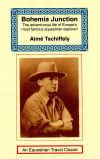 ISBN 1590480155
|
Bohemia
Junction, Aimé Tschiffely - One
reviewer described “Bohemia Junction” as ‘Forty years of adventurous
living condensed into one book.” It is all that and more!
Aimé Tschiffely was the most famous equestrian traveler of the twentieth
century because of his legendary 10,000 mile ride from Argentina to
Washington DC in 1925.
Readers won’t be surprised then to discover that exotic people, faraway
places and equestrian adventure make up the background to the explorer’s
autobiography. “Bohemia Junction” is packed with the amazing
assortment of humanity that Tschiffely met during his lifetime of travel,
including cowboys, prize-fighters, writers, Indians, and the eccentric
riff-raff of three continents.
From Cape Horn to New York, Tschiffely journeyed wherever his vagabond
fancy took him. And each region explored had its quota of “bohemians”
in the old sense of the word – men and women for whom love of adventure
was a reality.
“Bohemia Junction” delivers more than just an account of the famous
equestrian traveler’s life. It gives the reader an exuberant drama,
peopled by the reckless rough-necks of a now bygone age.
No equestrian travel collection is complete without this timeless classic.
Go
to
Amazon.co.uk
or
Barnes & Noble |
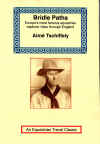 ISBN 1590480139
|
Bridle
Paths, Aimé Tschiffely - What
does the world’s most famous equestrian explorer do when he comes home
to England after making a 10,000 mile ride from Argentina to Washington,
DC? He writes a best-selling book about his adventures, “Tschiffely’s
Ride”, then sets off on a new horse to explore rural 1930s Britain.
Through the ancient New Forest, over the lonely mountains of Wales, and
across the rugged landscape of Scotland, the renowned author investigated
the nooks and crannies of this island kingdom. Mounted on his gentle Cob
mare, Violet, Tschiffely details the last roving adventure of its kind.
“Bridle Paths” is a final poetic look at a now-vanished Britain, as it
was before the advent of suburbia changed it forever.
This superb book is amply illustrated with Tschiffely’s own pencil
drawings. As a bonus, it includes a special appendix listing the equipment
used by the mounted traveler, as well as detailed sketches of the method
he used to pack his horse.
No equestrian travel collection is complete without this classic tale.
Go
to Amazon.co.uk
or Barnes & Noble for more details |

ISBN 1590482123
|
Eye on the Hill, Richard Barnes, with a preface by
Christina Dodwell - There are
plenty of thrilling equestrian travel books packed with mounted adventure.
But not this book. There are numerous accounts of heroic deeds, brave riders
and courageous horses. But not this book. There are a host of exciting tales
involving equestrian explorers surviving outrageous events.
But there’s only one “Eye on the Hill” !
While you won’t
find any blazing adventures within these covers, what you will discover is
one of the most captivating books in modern equestrian literature. It is
poetry, set to the sound of a horse’s gentle clip-clop. It is a tale of the
gradual uncovering of the secrets of back country Britain. It is a sweeping
away of pedestrian restraint. It is magical music sung to the tune of the
lark singing and the saddle creaking on a warm summer’s day.
It is “Eye on the
Hill.”
Written, and
ridden, by the British Long Rider Richard Barnes, “Eye on the Hill” is much
more than just a recollection of this noted traveller’s thousand mile
journey around England, Wales and Scotland. It’s true that Barnes explains
how he and his faithful Cob companion, Remus, explored every nook and cranny
of the British Isle, ranging from the Cambrian mountains to Hadrian’s Wall
and then on to the sea at Norfolk. But this is no mere bland recounting of
geography and campsites.
Barnes is
possessed with the critical eye of the travelling poet. As Remus takes them
further from home, Barnes sees the England he loves threatened by the
spectre of an ever more aggressive industrialized society. The author turned
Long Rider warns about the loss of Britain’s horse trails and the need to
preserve the country’s endangered equestrian culture. Not since William
Cobbett rode the back roads of England, has a man noted with such vigour
what’s right and wrong with his country from horseback. Not since George
Borrow cantered with the gypsies has any-one told the tales of the nomads
such as Richard Barnes has done.
Amply illustrated with stunning
black and white photographs taken by the author during his journey, “Eye on
the Hill” is part prophecy, part travelogue, and always engaging.
For more information, please go
to
Amazon.co.uk or
Barnes & Noble. |
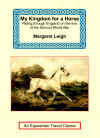 ISBN 1590480295
|
My
Kingdom for a Horse, Margaret Leigh -
In
the autumn of 1939 a young English woman faced a difficult choice.
Margaret Leigh had just sold her farm in Cornwall and wanted to return to
her ancestral home in the Highlands of Scotland. Yet how to get there?
The obvious choice would have included either a train or automobile.
However Leigh had a strong streak of adventure running through her. She
opted for that altar of travel, the saddle, dismissing those nay-sayers
who said the deed couldn’t be done in such a modern age.
What followed can only be described as one of the most delightful
equestrian journeys of the early twentieth century, neither too hot, nor
too cold, not too long, nor too short. It was in fact, just right!
Though England was rushing headlong into the disaster of the Second World
War, Leigh and her mare Ladybird, passed through the countryside
unscathed, observing the twilight of a rural lifestyle that had lasted for
centuries. “My Kingdom for a Horse” is thus poetic and practical,
alternately full of first-hand advice for travelers and keen observations
of a rural England that no longer exists.
Go
to Amazon.co.uk
or
Barnes & Noble. |
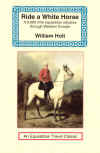 ISBN 1590480449 |
Ride
a White Horse, William Holt -
Equestrian
stories are full of adventures, adversities, dangers and drama. Yet the
curious story of William Holt and his cart horse, Trigger, is one of the
most inspiring equestrian travel tales ever told. After rescuing the
gelding from slaughter, and then nursing him back to health, the
67-year-old Holt and his horse set out in 1964 on an incredible 9,000
mile, non-stop journey through western Europe.
Holt never ranked himself above his mount. The resultant trip saw them
sleeping out in the rough without a tent for more than 400 nights.
Together they faced great hardships, suffering through storms, floods and
whirlwinds. At one point in their travels the ageing gypsies were even
marooned on a ledge and nearly drowned by the raging sea.
Because of these shared dangers, Holt and Trigger maintained a legendary
bond that touched people’s hearts. An Italian princess had jewels set in
one of Trigger’s old shoes. When they rode into London the likeable duo
were guests of the Queen of England.
Amply illustrated with photographs and drawings by the author, “Ride a
White Horse” remains the classic equestrian tale of a man and his
beloved horse who embarked together on an extraordinary adventure. Go
to Amazon.co.uk
or
Barnes & Noble. |
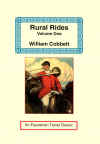
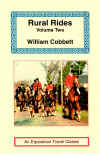 |
Rural
Rides, Volumes 1 and 2, William Cobbett - William
Cobbett (1762-1835) was an essayist, politician, agriculturalist,
journalist, and equestrian traveller. The son of a labourer, Cobbett was
self taught. He enlisted in the British Army, then fled to Philadelphia to
avoid prosecution for demanding a decent wage for his fellow soldiers.
After several years in exile, Cobbett returned to England where he became
politically active, eventually winning a seat in Parliament. In the early
1820s the new MP set out on horseback to make a series of personal tours
through the English countryside. These observations were collected and
make up the two volumes of “Rural Rides”.
The two books are written in some of the finest prose to grace the English
language. Considered one of the best accounts of rural England ever
written – they are detailed, factual, filled with shrewd observation and
remain enduring classics.
Go to Amazon.co.uk or
Barnes & Noble |
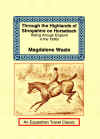 ISBN 1590480384 |
Though
the Highlands of Shropshire, Magdalene Weale - It
was 1933 and Magdalene Weale was faced with a dilemma. How to best explore
her beloved English countryside? A motor car was denounced for its lack of
involvement with the landscape. The bicycle, a “useful vehicle,” was
nonetheless ruled out as it restricted the traveler to much the same view
afforded from a car. Plus walking allowed only a limited degree of rural
investigation. It seemed logical therefore to set out on horseback!
What better way to do justice to the glorious "Highlands of
Shropshire" or experience a sense of wild freedom than from the back
of a saddle? A picturesque part of England steeped in legend, Weale
discovered that Shropshire hosted ancient stone circles once frequented by
sun worshipping primitives, Roman ruins close to their still tightly
cobbled roads, and the remains of Saxon, Norman and Viking settlements.
“Through the Highlands of Shropshire” is also full of natural beauty
with page after page revealing the poetic observations of flora and fauna,
birds and wildlife, as seen from the back of Weale’s ambling mare,
Sandy.
Part historical account, part Edwardian remembrance, it invokes a gentle,
softer world inhabited by gracious country lairds, wise farmers, and jolly
inn keepers. Complete with pencil drawings and detailed maps, this fine
little book begs the reader to follow Weale’s advice. “Go thou and do
likewise.”
Go
to Amazon.co.uk
or Barnes
& Noble |
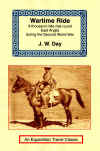 ISBN 1590480392
|
Wartime
Ride, J. Wentworth Day - It
was wartime in England. London was being bombed by the Nazis. Coventry
Cathedral was a smoke-filled ruin and a sense of desperation gripped the
island kingdom. Yet even though the Second World War was raging all around
him, the English country squire J. Wentworth Day decided the time was
right for an extended horseback ride through his disaster-torn country!
Setting off on his Thoroughbred, Robert, Day began the only wartime ride
of its kind, a rural odyssey that took him through Essex, Hertfordshire,
Cambridge, Norfolk and Suffolk. The equestrian journey gave the author a
glimpse into the living picture of a mediaeval portion of England which,
until 1939, had hardly changed for centuries.
Day takes the reader into the countryside and delivers one surprise after
another. For while the eastern coast was being ravaged by warfare, the
gentleman farmer discovered an inland oasis of mellow harvest fields,
birds and badgers, autumn sunshine, moated Tudor farmhouses, peaceful
country halls, and fishing villages, all populated by shrewd farmers or
slow-talking fisher folk.
Amply illustrated with photographs, “Wartime Ride” manages to put into
words the charm of a countryside struggling for its very existence.
Go
to Amazon.co.uk
or
Barnes & Noble |
|

ISBN 1590482344 |
Wild Wales, George Borrow
- A much loved and frequently
reissued classic, Wild Wales first appeared in 1862. It is George
Borrow’s account of a family holiday spent in Llangollen, North Wales, to
which are attached two strenuous walking tours in search of the homes and
haunts and last resting places of the bards whom he loved. The first tour
encompasses much of Snowdonia and Anglesey, and the second takes him the
length of the country from Llangollen to Swansea and thence through South
Wales to Chepstow.
Traveller, linguist and author of The
Bible in Spain, Lavengro, and Romany Rye, Borrow explores the
often dramatic scenery of Wales, delving into its literary past, its
history, myths and legends, and meeting its people along the way, conveying
as he does so his enthusiasm for all things Celtic.
Wild Wales
is much more than a straightforward travel account. It is a book rich with
characters, complete with princes, heroes, villains and rogues. In its pages
we meet the delightful John Jones and the comical Tom Jenkins, we are
introduced to Owain Glyndwr and his struggles against the English Crown.
Great poets like Dafydd ap Gwilym share space with robbers like the Plant de
Bat and the Robin Hood like Twm Shone Catti. Forbidding monsters, in
imagination at least, inhabit the lakes, and the church cat slumbers
peacefully in a cottage by the River Dee.
Frequently biased and argumentative,
Borrow is at all times energetic and readable and remains among the
liveliest writers on Wales. His book is still one of the best introductions
to the country.
For more information, please go to
Amazon.co.uk or
Barnes & Noble, or visit the
George Borrow
page on Classic Travel Books. |
Back to Europe page
Home
|